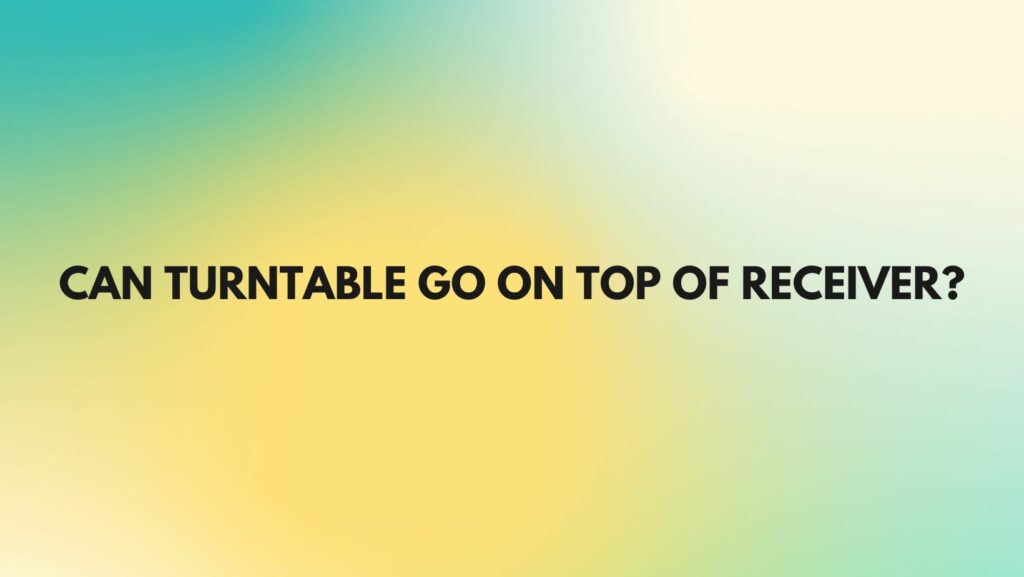When it comes to creating a well-balanced and aesthetically pleasing audio setup, the placement of your audio components plays a crucial role. Audiophiles and music enthusiasts often wonder about the compatibility of placing a turntable on top of a receiver. In this article, we will delve into the considerations, benefits, and potential drawbacks of such an arrangement to help you make an informed decision about optimizing your audio experience.
Understanding the Components:
Before discussing whether a turntable can be placed on top of a receiver, it’s essential to understand the functions of each component. A turntable is a precision instrument designed to play vinyl records, relying on delicate mechanisms to produce high-fidelity sound. On the other hand, a receiver serves as the central hub for your audio system, amplifying signals and managing the connections between various audio sources.
Considerations for Placement:
- Vibration and Stability:
- Vibrations from the turntable can affect its performance, potentially leading to skips and distortion. Placing the turntable on a stable surface, such as a receiver, can help minimize vibrations.
- Ensure that the receiver has a solid and vibration-resistant construction to avoid interference with the turntable’s delicate components.
- Heat Dissipation:
- Both turntables and receivers generate heat during operation. Consider the heat dissipation capabilities of your components when stacking them. Ensure there is enough ventilation to prevent overheating.
- Weight Limitations:
- Check the weight capacity of your receiver to ensure it can support the additional load of the turntable. Exceeding the weight limit may lead to structural damage and affect the performance of both components.
- Isolation:
- To minimize interference, use isolation devices such as vibration-absorbing pads or feet between the turntable and the receiver. This can help prevent the transfer of vibrations and ensure optimal performance.
Benefits of Stacking:
- Space Efficiency:
- Placing the turntable on top of the receiver can save space, especially in setups where real estate is limited. This arrangement can be visually appealing and create a streamlined look.
- Convenience:
- Having the turntable and receiver in close proximity makes it easier to manage cables and connections. This can contribute to a more organized and user-friendly setup.
Drawbacks and Alternatives:
- Vibration Concerns:
- Despite efforts to minimize vibrations, stacking components may still result in some level of interference. Consider alternative setups, such as side-by-side placement on a dedicated audio rack, to further isolate the turntable.
- Accessibility:
- Placing the turntable on top of the receiver might hinder easy access to controls or impair the visibility of the turntable’s tonearm. Ensure that the arrangement allows for convenient operation and maintenance.
Conclusion:
In conclusion, the decision to place a turntable on top of a receiver involves careful consideration of various factors. While it can be a space-saving and visually appealing option, it’s crucial to prioritize the optimal performance of your audio components. By addressing concerns related to vibration, stability, and heat dissipation, you can create a setup that not only looks great but also delivers a superior audio experience. Whether you choose to stack your components or explore alternative arrangements, the key is to strike a balance between functionality, aesthetics, and audio fidelity in your quest for the perfect audio setup.

